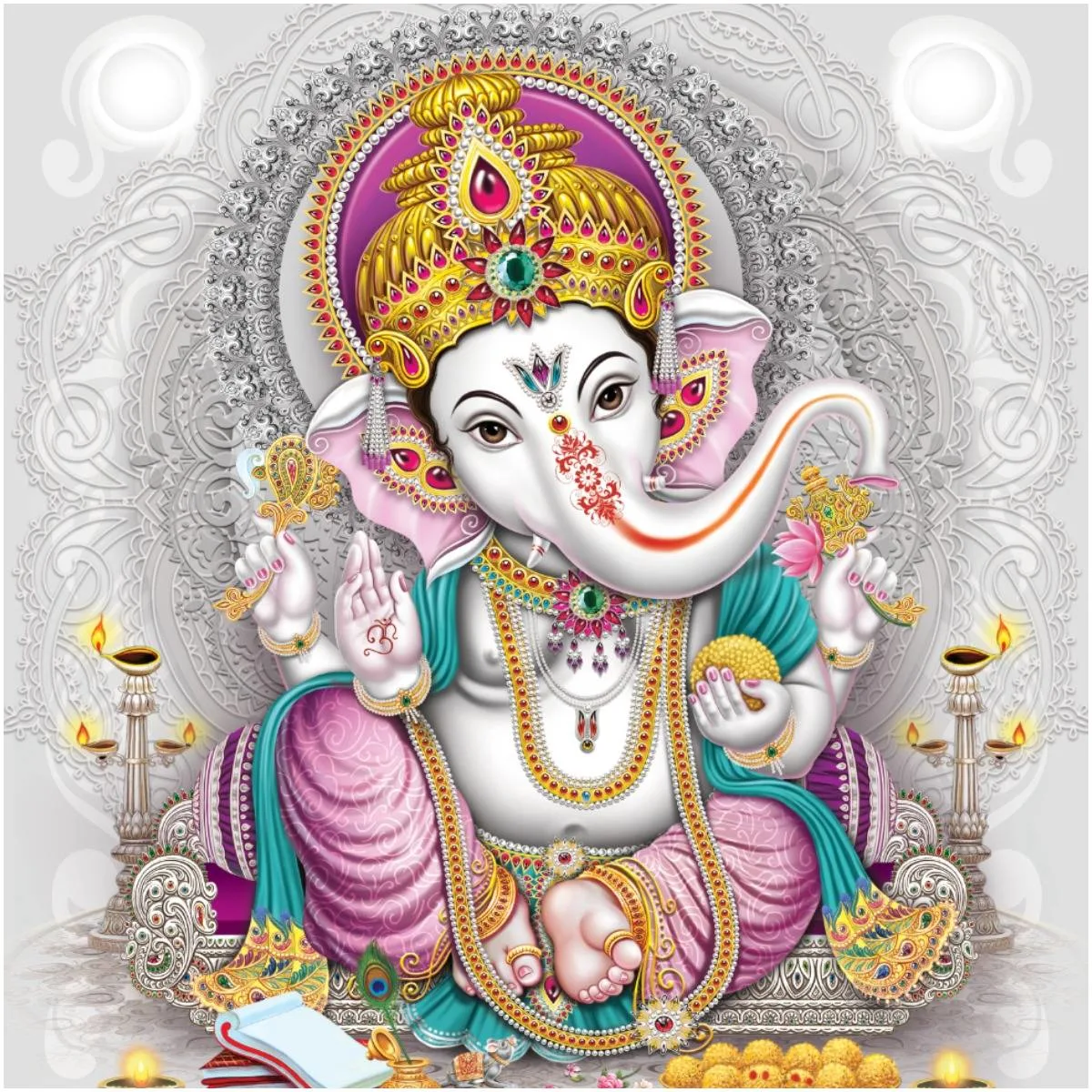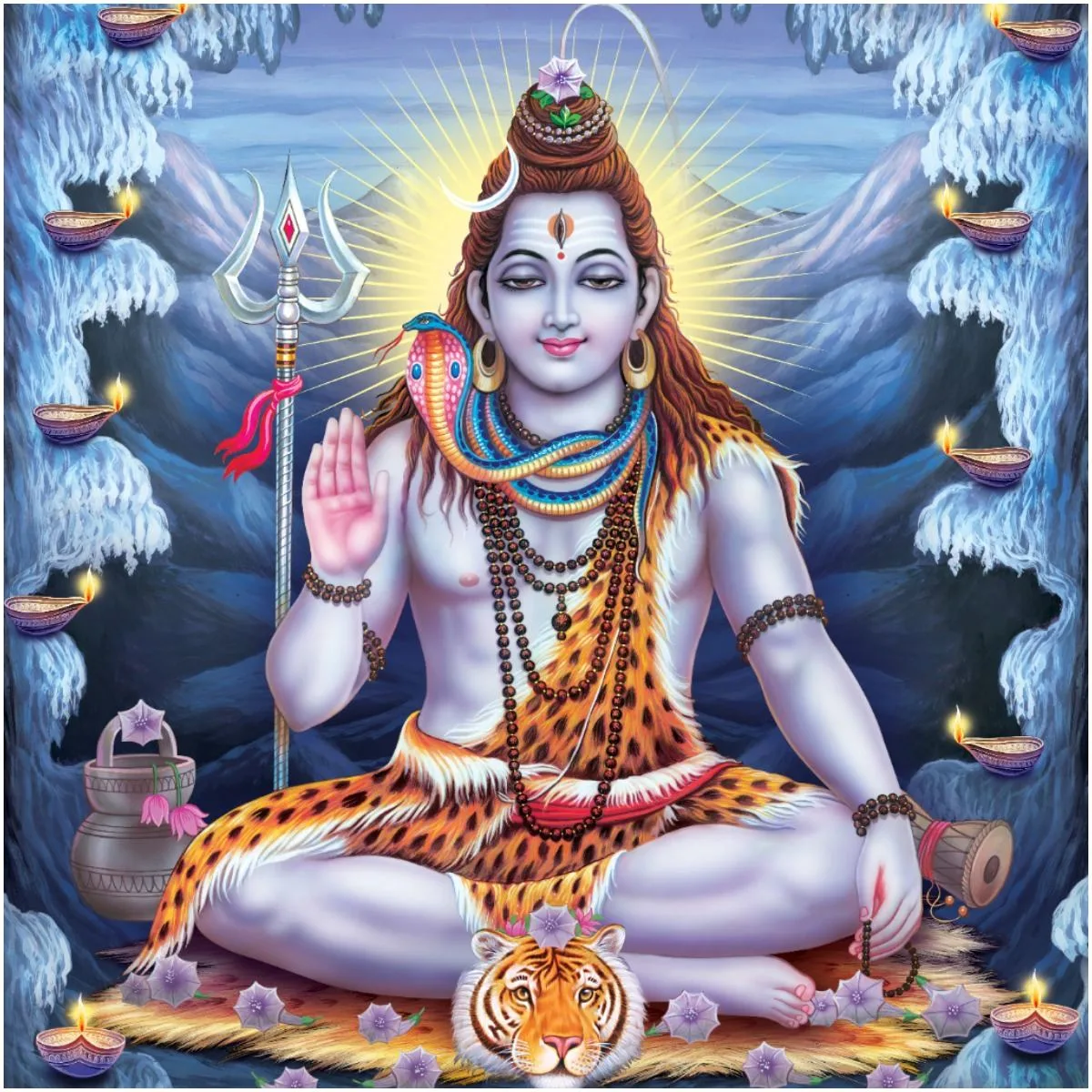Here are the top 36 cool and interesting facts about Hinduism:
#1 It is the world’s third-largest religion, closely following Christianity and Islam. It claims about 950 million followers, that’s approximately 14 percent of the world’s population.
#2 Interestingly, unlike the practitioners of Christianity and Islam, 95 percent of Hindus live in a single nation – India. Other countries where most of the Hindu population is concentrated include – Bangladesh, Nepal, Sri Lanka, Indonesia, and Pakistan. Also, in many regions of China, carvings and paintings, and temples of Hinduism have been acknowledged.
#3 It was not founded by one individual. Rather, this religion is a fusion of numerous philosophical schools and religious beliefs.
#4 Along with extreme tolerance, very strong scientific fundamentals, and colorful cultural practices, atheism is also part of this religion. All this has allowed the religion to sustain and flourish for millennia.
Beliefs
#5 Hindus consider that all life is sacred, to be revered and loved, hence, they practice ahimsa (harmlessness) in the word, thought, and deed.
#6 Hindu tradition is responsible for the creation of practices and concepts, like – Ayurveda, Yoga, Jyotish, Vastu, Puja, Yajna, Vedanta, Tantra, and Karma.
#7 Hindus believe in karma – the person’s deeds (which include thought, word, and action). They believe that an individual’s actions will determine their life, both in their current life and in the next.
#8 Spiritual salvation or moksha is the main concept in many religions of the world, including this one. The possibility of attaining complete freedom from samsara – the cycle of life and reincarnation is opened up by moksha. Furthermore, it is said that this is the ultimate goal in the life of a Hindu practitioner – to be free from samsara and to merge into the universe itself.
#9 Because in this religion, God is considered both female and male, or as the one who has no sex or both, both female and male deities are venerated and adored with equal respect reverence.
#10 “Hinduism” is not the real word for the religion. The actual name of this ancient religion is “Vedic Dharma” or “Sanatana Dharma.” Sanatana Dharma represents “Eternal Truth” or “Eternal Dharma.”
#11 In this religion, it is not recommended to sleep in the north-south direction and only the dead bodies should be laid in this direction.
#12 The Yoga system is believed to have its roots in the Samkhya philosophy (one of the most prominent and one of the oldest of Indian philosophies). The practice of yoga referred to here, nevertheless, is Raja Yoga, better known as Ashtanga Yoga. This yoga method is based on the sage Patanjali’s text called the Yoga Sutra (written at least 1,700 years ago), which is about the Yoga philosophy which came before.
#13 Bhagavad Gita and the Upanishads are also essential sacred writings in the study of Yoga.
Vedas
#14 This religion is made up of numerous scriptures and texts, and it is the combined teaching of all these profound texts that make up the religion. The Vedas include Yajur-Veda, Rigveda, Atharva-Veda, and Sama-Veda.
#15 Sanskrit, also known as the mother of all languages, is the oldest language in the world. Every Hindu text is written in this language, and it is said that Sanskrit is the language of the demi-Gods.
#16 The Rig Veda, composed about 1200 b.c.e., written in Sanskrit and for millennia preserved only orally, is also among the oldest known texts of the Indo-European world.
#17 According to Vedas, the beej mantra – ”Om” is the sound that was present at the time of the creation of the entire universe and it is the only symbol representing the Brahman.
#18 Even though the ancient Vedas were composed thousands of years ago, present-day scientists have found a strong link between their true messages and modern science.
#19 Commentaries on the Vedic texts, known as the Upanishads, speculate on the nature of deity and the origin of the creation, and the individual soul (atman) and its relationship to the universal soul (Brahman).
#20 The Hindu epic of Mahabharata, which describes the principles of this complex religion, is the largest poem in the world, written (in Sanskrit) in approximately two million words, that is around 1000 percent the combined length of the Odyssey and Illiad.
#21 Numerous practitioners in this religion are devoted followers of Lord Vishnu and Lord Shiva, whom they consider as the only true God, while other devotees look inward to the Atman.
#22 Festivals and pilgrimages are frequent in Hinduism and include – Holi, the Festival of Colors, which marks the arrival of spring each year, or Diwali, the New Year’s celebration, which features giving of gifts and lighting of ceremonial lamps.
Hindu Temples
#23 Hindu temples to date do not have a place for mass worship, unlike Mosques and Churches. The ”Mandap” is the only place where religious ceremonies are performed for public viewing. Even in the present day, the inner prayer areas of the temple are limited in space to hold a large gathering.
Lord Shiva
#24 Lord Shiva is the 3rd member of the Hindu Trinity (also referred to as the Hindu Triumvirate), tasked with destroying the entire creation in order to prepare for its renewal at the end of each cycle of time. However, His destructive power is regenerative and, at the same time, a necessary step that makes renewal possible.
#25 Shiva is the Lord of compassion and mercy. He protects spiritual practitioners from negative forces, like – greed, lust, and anger. He bestows grace, grants boons, and awakens wisdom in His true devotees.
#26 He is also considered to be the God of all as well as the most unique of all Hindu gods. A great ascetic, He is the only God who is forever in profound meditation, completely absorbed in contemplation in Kailash Mountain, His abode, in the great Himalaya.
#27 In temples, the Supreme Lord Shiva is commonly portrayed as a phallic symbol – the ”linga,” that symbolizes the energies necessary for life on both the macrocosmic and the microcosmic levels – both the world which constitutes the whole of the universe and the world in which we live.
#28 He is escorted by asuras that are also bloodthirsty and can devastate anything with a sweeping operation.
Lord Ganesh
#29 Lord Ganesh, also known as Vinayaka, Ganapati, and Binayak, is one of the best-known and most adored gods in the Hindu tradition.
#30 He is also known as the destroyer of evils and obstacles and the lord of success and venerated as the god of wisdom, education, and wealth.
#31 He is a guardian of doors of temples and houses. He is the 1st Hindu deity to be revered in rites in this religion. Moreover, Lord Ganesh is the God that removes the external and internal obstacles or hindrance of our success (both spiritual and financial),
#32 More importantly, Lord Ganesh is the protector of all living beings as well as the one that grants the opening of your spiritual gifts.
#33 He is popularly held to be the son of Goddess Parvati and Supreme Lord Shiva (also known as The Destroyer). However, ancient Jain and Hindu texts describing the history of the Universe as well as the Hindu philosophy, cosmology, and geography – the Puranas, disagree about his birth.
#34 According to ancient Hindu scriptures, He had 2 wives (His depictions are usually flanked by the images of His wives): Sidhhi (symbolizing – intellectual enlightenment) and Ridhhi (symbolizing – prosperity). In addition, Lord Ganesh had 2 sons – Sidhhi bore him Labha (symbolizing – profit) while Ridhhi bore him Subha (symbolizing – auspiciousness).
#35 Poets traditionally pray to Lord Ganesh at the start of a book. He is also honored at the start of a business venture or journey. Statues of Lord Ganesh can be found in most Indian towns and temples. For instance, His image is usually placed where new houses are to be built.
#36 Lord Ganesh is commonly depicted with an elephant’s head, four hands (His 4th hand’s palm is always extended to bless people), and a big belly. In his hands, Lord Ganesh carries an ax (to cut devotees’ attachments), a rope (to carry devotees to the truth), and a sweet dessert ball – laddoo (to reward the follower for spiritual activity). His mount is a tiny mouse.
Images credit – @Getty & Shutterstock
READ THIS NEXT: Interesting Facts About Sikhs
References https://www.himalayanacademy.com/readlearn/basics/nine-beliefs http://www.bbc.co.uk/religion/religions/ https://www.britannica.com/topic/ http://www.religioustolerance.org/


India
Wednesday 17th of June 2020
😁
India
Wednesday 17th of June 2020
Thank you !